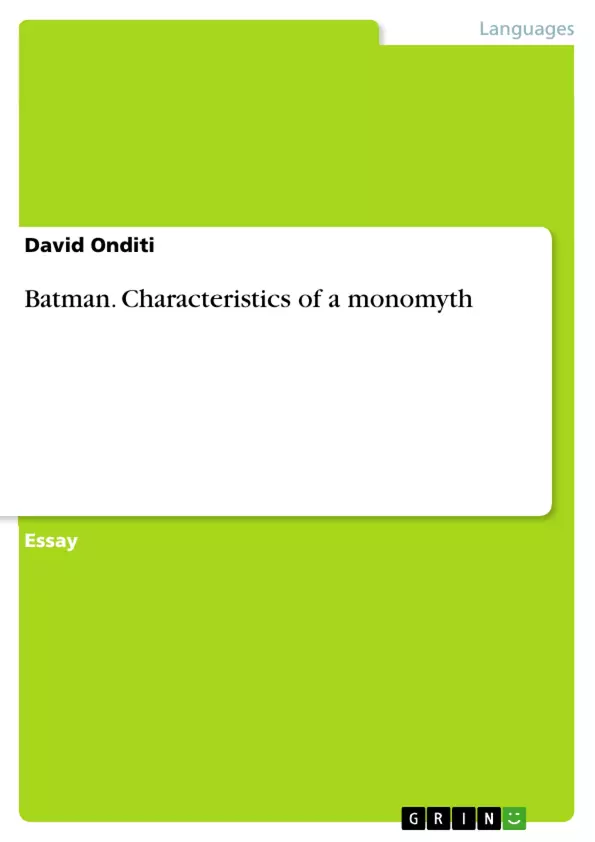This presentation tries to explore the characteristics of Batman both as a superhero and as a monomyth. It starts with the question of how Batman reftlects the time and culture of the era it became popular and compares the components of the movie with those of a classic monomyth.
Table of Contents
- The call to Action
- Refusal to call
- Supernatural aid
- Crossing the first threshold
- Road of trials
- Atonement with the father
- Apotheosis
Objectives and Key Themes
This work explores the character of Batman as a reflection of the time and culture of the 1930s. The author examines how the hero's journey, particularly as presented in "The Dark Knight Returns," aligns with the stages of Joseph Campbell's monomyth. This analysis sheds light on the societal anxieties and aspirations of the era.
- The Monomyth and its Application to Superhero Narratives
- The Cultural Context of the 1930s
- The Character Development of Batman
- The Psychology of the Superhero
- The Role of Fear and Trauma in the Hero's Journey
Chapter Summaries
The chapters delve into the stages of Campbell's monomyth and how they are embodied by Batman in "The Dark Knight Returns." Each stage is analyzed, showcasing how the hero's internal conflict and external challenges mirror the societal tensions and cultural anxieties of the 1930s. The author focuses on the hero's initial reluctance, his supernatural aid, his confrontation with the criminal underworld, and his ultimate acceptance of his role as Batman.
Keywords
Key terms and concepts covered in the text include: Monomyth, Joseph Campbell, Batman, The Dark Knight Returns, 1930s, cultural context, superhero, hero's journey, societal anxieties, psychological trauma, fear, conflict, acceptance, duality, transformation.
- Quote paper
- David Onditi (Author), 2019, Batman. Characteristics of a monomyth, Munich, GRIN Verlag, https://www.hausarbeiten.de/document/498732


